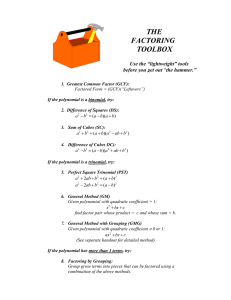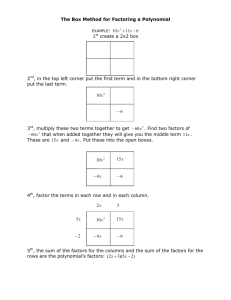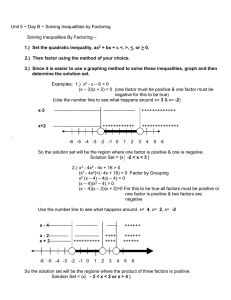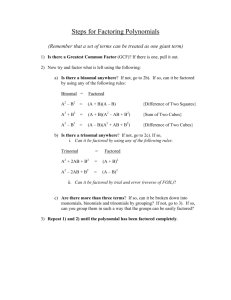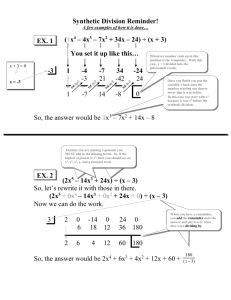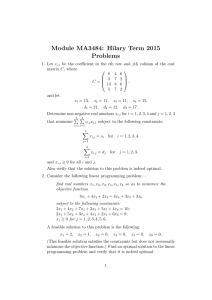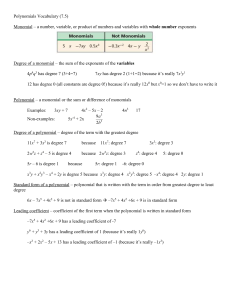Guidelines for Factoring Completely
advertisement
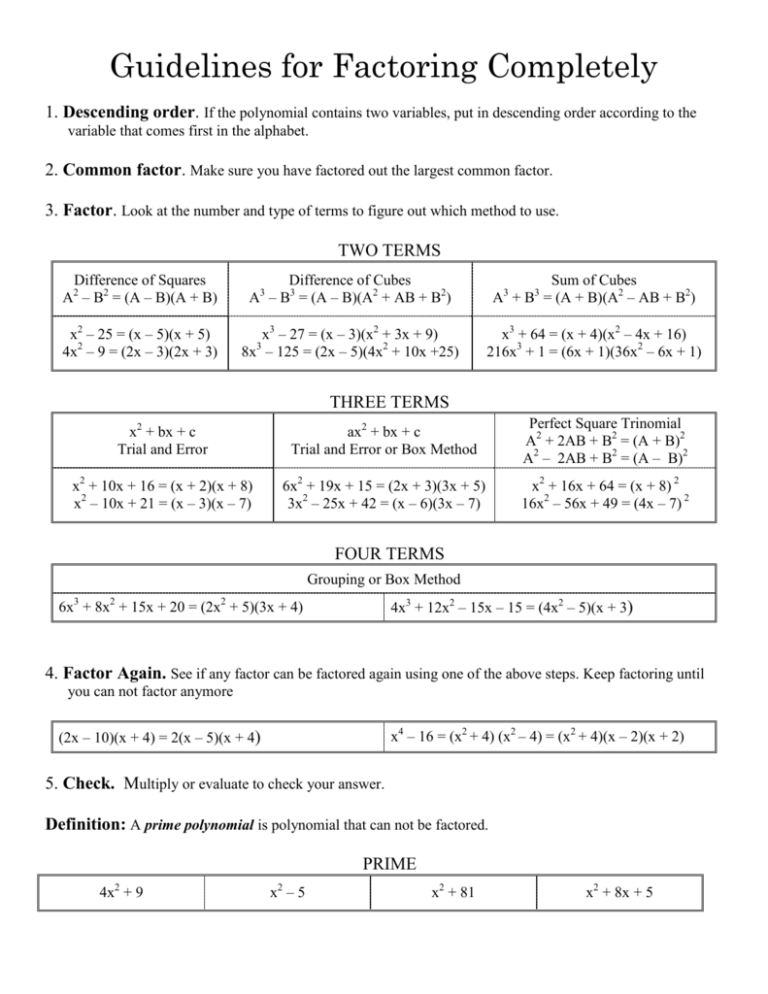
Guidelines for Factoring Completely 1. Descending order. If the polynomial contains two variables, put in descending order according to the variable that comes first in the alphabet. 2. Common factor. Make sure you have factored out the largest common factor. 3. Factor. Look at the number and type of terms to figure out which method to use. TWO TERMS Difference of Squares A – B2 = (A – B)(A + B) Difference of Cubes A – B3 = (A – B)(A2 + AB + B2) Sum of Cubes A + B = (A + B)(A2 – AB + B2) x2 – 25 = (x – 5)(x + 5) 4x2 – 9 = (2x – 3)(2x + 3) x3 – 27 = (x – 3)(x2 + 3x + 9) 8x – 125 = (2x – 5)(4x2 + 10x +25) x3 + 64 = (x + 4)(x2 – 4x + 16) 216x3 + 1 = (6x + 1)(36x2 – 6x + 1) 2 3 3 3 3 THREE TERMS x2 + bx + c Trial and Error ax2 + bx + c Trial and Error or Box Method Perfect Square Trinomial A2 + 2AB + B2 = (A + B)2 A2 – 2AB + B2 = (A – B)2 x2 + 10x + 16 = (x + 2)(x + 8) x2 – 10x + 21 = (x – 3)(x – 7) 6x2 + 19x + 15 = (2x + 3)(3x + 5) 3x2 – 25x + 42 = (x – 6)(3x – 7) x2 + 16x + 64 = (x + 8) 2 16x2 – 56x + 49 = (4x – 7) 2 FOUR TERMS Grouping or Box Method 6x3 + 8x2 + 15x + 20 = (2x2 + 5)(3x + 4) 4x3 + 12x2 – 15x – 15 = (4x2 – 5)(x + 3) 4. Factor Again. See if any factor can be factored again using one of the above steps. Keep factoring until you can not factor anymore x4 – 16 = (x2 + 4) (x2 – 4) = (x2 + 4)(x – 2)(x + 2) (2x – 10)(x + 4) = 2(x – 5)(x + 4) 5. Check. Multiply or evaluate to check your answer. Definition: A prime polynomial is polynomial that can not be factored. PRIME 4x2 + 9 x2 – 5 x2 + 81 x2 + 8x + 5


